CarEdge saved me over 4,500 dollars on a brand new Honda Pilot. I can't say thank you enough.
Price intelligence
Find a wide range of vehicle listings with market insights on new and used listings near you.
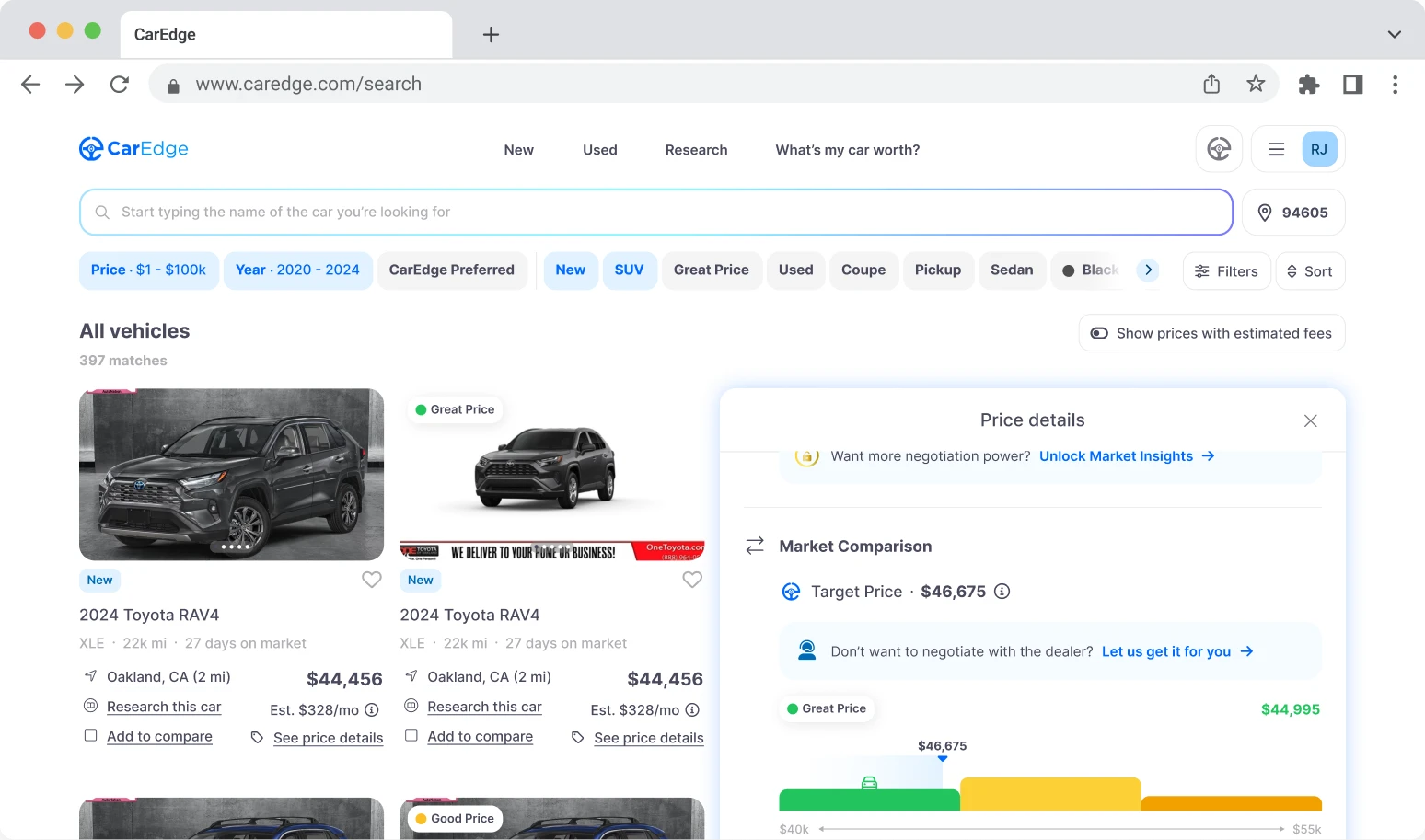

Help us personalize your CarEdge experience — it only takes a second.
Your answers help us personalize your CarEdge journey — we’ll follow up with tips and next steps that match your buying timeline.

Heading into 2023, larger families in the market for an electric SUV are left with few options. Unless you’re prepared to spend over $90,000 for a Tesla Model X or Rivian R1S, your best shot has been to stick to conventional hybrids or PHEVs. That’s all going to change with the arrival of the Kia EV9 and Hyundai IONIQ 7 in 2024. These two are set to become the first 3-row electric SUVs with affordable pricing. Here’s everything we know about the IONIQ 7 and Kia EV9’s release date, pricing and specs.
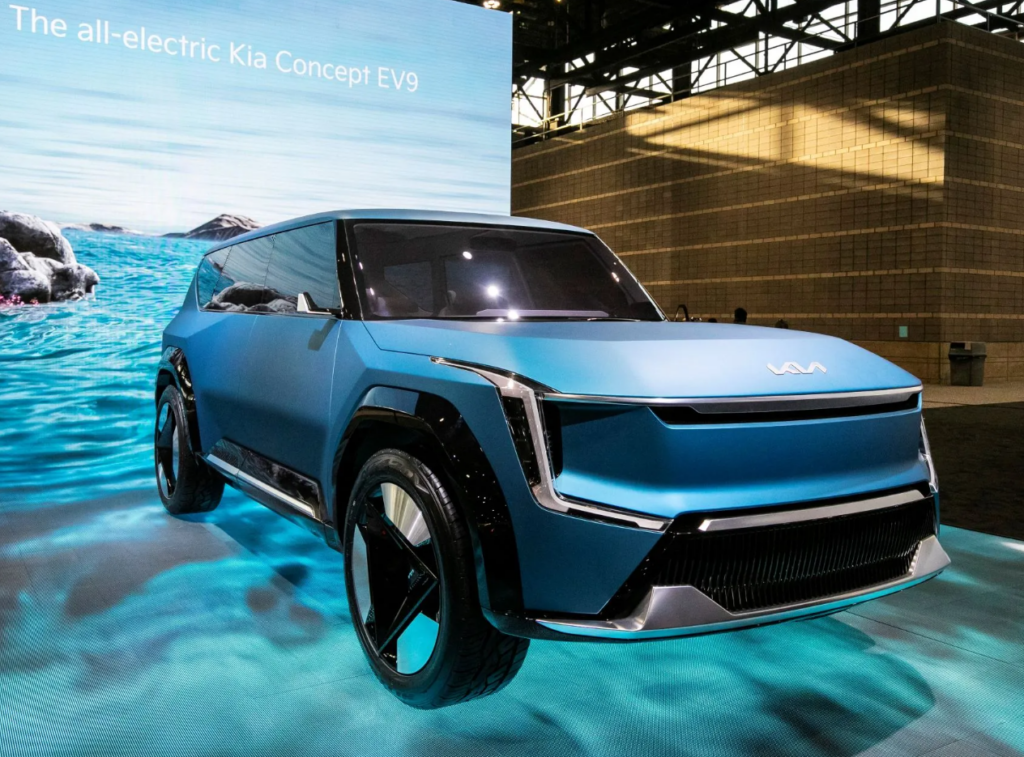
Revealed at the 2021 Los Angeles Auto Show as a concept, the EV9 builds upon the success of Kia’s electric flagship, the hot-selling EV6 electric crossover. Precisely how much of the EV9 concept will make it into the production-ready EV9 remains unknown, so we’ll proceed with a healthy dose of skepticism.
The Kia EV9 concept EV9 features a third row of seating, something that only three mainstream electric cars offer for the 2023 model year. That would be the Tesla Model X ($120,990+), the brand-new Rivian R1S ($78,000+) and the Vinfast VF-9, which is not yet in production, but will start at $57,500 or $76,000 with the battery. Yes, you read that right. The VF9 will require an additional $18,000 to buy the battery, or you can pay a monthly battery fee instead. More on that here. Let’s see how the Korean offerings will compare.
We expect the EV9 to launch with a starting price in the low to mid-$50,000 range. Why not cheaper? Raw material costs are increasing, making every EV more expensive to produce. Need proof? Check out lithium prices on commodity markets.
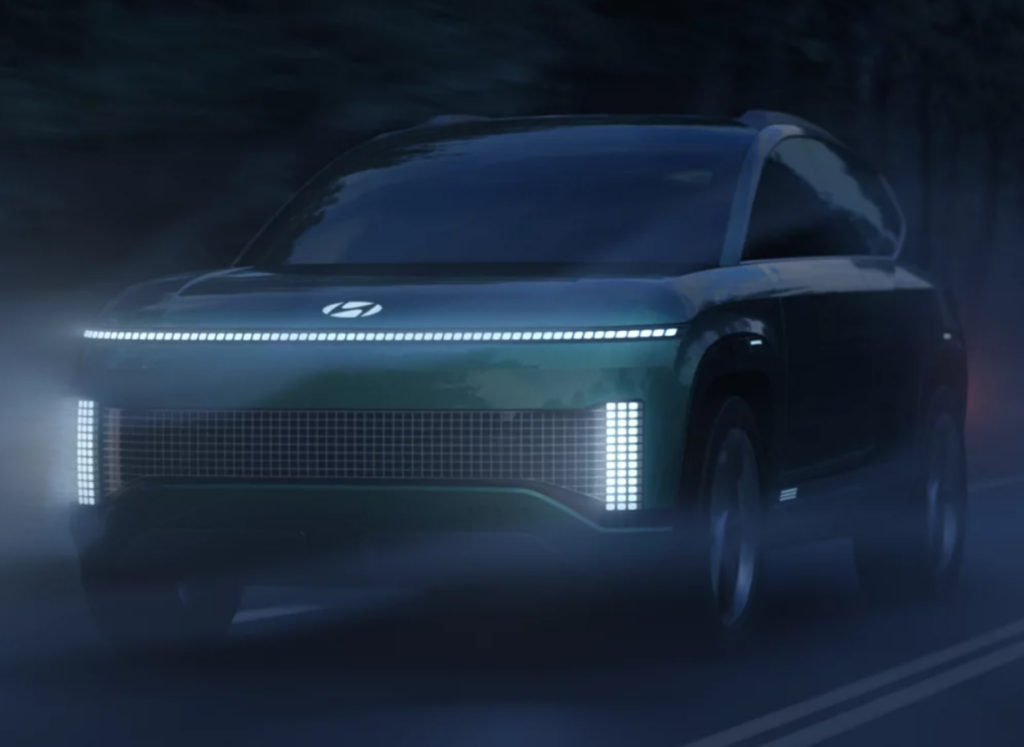
Automakers are looking for ways to sell higher-margin electric vehicles to fund their transition to EVs. One way they do that is to subsidize their headline-grabbing base model with affordable pricing with better equipped and much pricier mid and upper trim configurations. We expect this to be the only way that GM can offer a sub-$40,000 Chevy Equinox EV (more on the Equinox EV here). Kia and Hyundai are very likely to do the same. Expect the EV9 and IONIQ 7’s pricing to stretch from the low $50,000s all the way towards $70,000. Of course, the automakers are betting that you’ll want to upgrade to the more expensive options.
We track EV price updates. Here’s the latest.
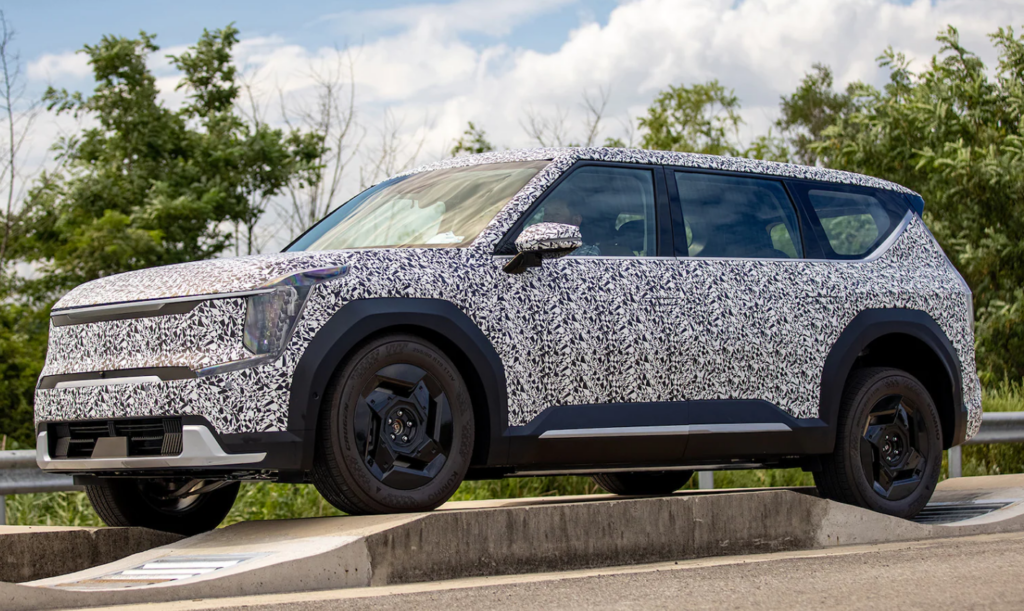
Multiple EV9s have been spotted doing road testing, and all signs point towards a production-ready unveiling in early to mid 2023. Although we haven’t seen any IONIQ 7s testing as of late 2022, we still expect the two to debut together, much like the Hyundai IONIQ 5 and Kia EV6 did in late 2021.
Finance with CarEdge! We work with trusted credit unions offering low rates and great customer service. Learn more and get pre-approved!
The Hyundai IONIQ 7 and Kia EV9 will launch in late 2023 as 2024 models. Of course, that’s unless the worsening semiconductor chip shortage and broader supply chain constraints delay the release date of the model. By then, the Vinfast VF9 will have arrived too. Although Vinfast doesn’t have the brand-recognition and dealer network of Hyundai and Kia, early media reviews are largely positive. You can learn more about Vinfast’s unique battery subscription model here.
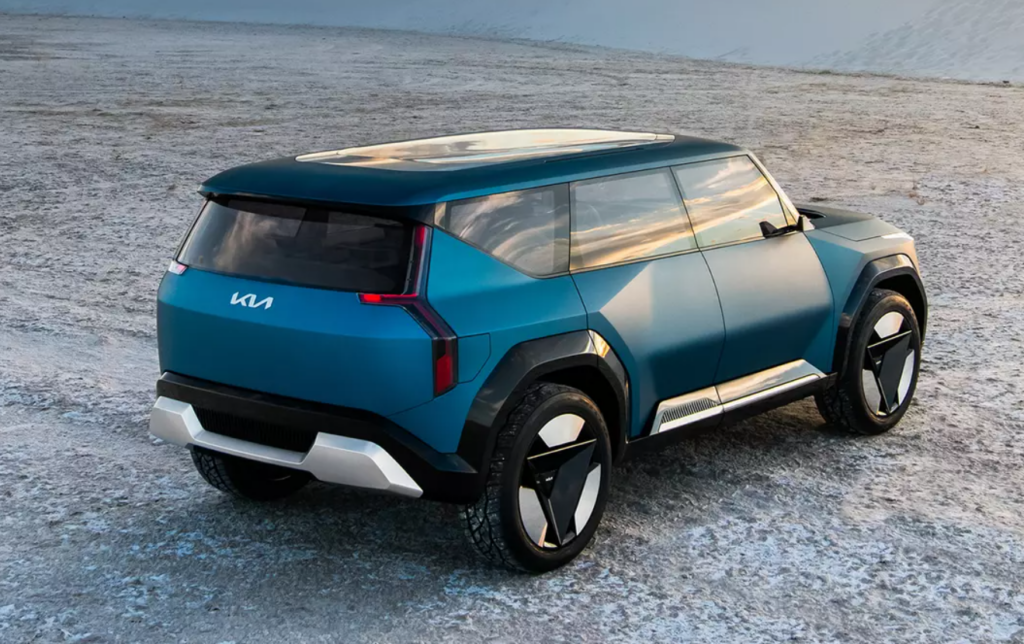
The Kia EV9 concept that was unveiled in 2021 was a bit over-the-top. It featured a solar panel on the front hood, a 27-inch infotainment and gauge display, and a pop-up steering wheel that is unlikely to survive the transition to production. The IONIQ 7 debuted as a literal living room on wheels. Fantasies aside, what will make it into production? Expected range, charging and pricing are enough to get us excited.
Kia and Hyundai claim that these two electric SUVs will get 300 miles of range on a charge. Before you demand more miles, remember that SUVs (and trucks) are by design inefficient. That means more batteries are needed to squeeze the same range when compared to a smaller crossover or sedan. Don’t expect 400 mile+ 3-row electric SUVs to become commonplace, let alone affordable, this decade.
The EV9 and IONIQ 7 will share the Electric Global Modular Platform (e-GMP) that Hyundai Motor Group engineered. There’s great info on this powertrain here. My own 2022 Hyundai IONIQ 5 has this same powertrain, and I love it. Range estimates are accurate, I’ve had minimal range loss after 15,000 miles, and charging is amazingly quick.
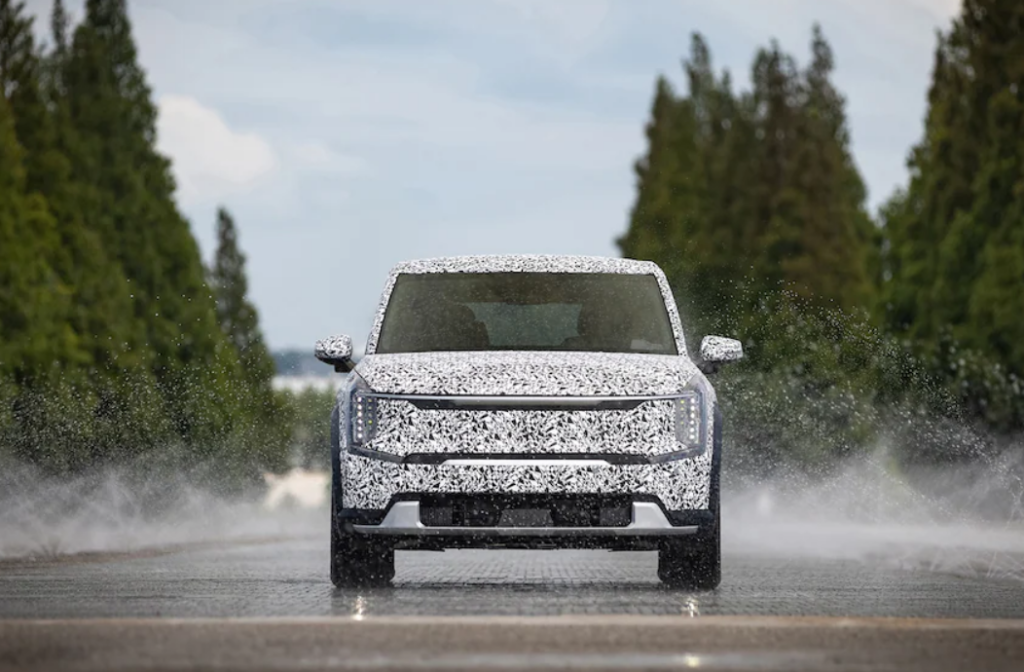
Kia says that the EV9 will be able to charge on 350-kilowatt DC fast charging stations, such as those found at Electrify America. We already know a lot about the e-GMP powertrain’s charging capabilities. With 350 kW charging, the EV9 will be able to add 200 miles of range in under 30 minutes. In all likelihood, the IONIQ 7 will match these specs.
Currently, Hyundai sources batteries from SK Innovation. In late 2021, SK Innovation announced plans for two battery plants at a single site in Commerce, Georgia. That’s just down the road from where their largest customer, Hyundai Motor Group, is building a massive EV production facility. We expect SK Innovation to supply American-made batteries for the IONIQ 7 and EV9.
That leads us to our final topic: EV tax credits in the US.
Will the Kia EV9 and Hyundai IONIQ 7 Qualify for EV Tax Credits? Yes, but it’s possible that the two models won’t be eligible until late 2024 or 2025. Why? Both Kia and Hyundai have publicly shared their intentions of speeding up construction at their new EV production facilities in Georgia. Even with the quicker timeline, executives say that they hope to begin volume production in the third quarter of 2024.
In order for any electric vehicle to qualify for the revised EV tax credit, the vehicle and buyer must meet several criteria. The most notable are the following:
See FULL DETAILS on the new EV tax credit.
Truthfully, Hyundai and Kia have not yet released much information about their two new 3-row electric vehicles. When the two OEMS unveil the production versions of the EV9 and IONIQ 7 in early 2023, we’ll update this page with interior images, additional specs, and all that we learn.
In the meantime, check out the fastest-growing EV forum on the internet. It’s free, and full of thousands of drivers at all levels of EV interest.

Our team of Car Coaches combines decades of experience in the automotive industry to help you, the consumer, buy a car without the hassle. That’s why we created this must-have resource for buying a new or used car at a dealership, whether in person or through the internet sales department. This car buying cheat sheet will help you negotiate car prices confidently, so you can drive away feeling proud of what you’ve accomplished.
Thank you to CarEdge’s Ray Shefska (former dealership sales manager) and Kimberly Kline (former dealership finance manager) for putting this together for car buyers everywhere!
Want to download printable versions of all CarEdge cheat sheets? Find them all here.
Use this cheat sheet to negotiate the best auto loan rates on new or used cars!
The best way to learn how to negotiate car prices effectively is to prepare for the situations and conversations you’re likely to encounter with the salesperson and finance manager. Feel free to print off this cheat sheet and bring it with you! Without further ado, here’s how an informed, prepared car buyer can expertly negotiate.
Salesperson: What do you want your monthly payment to be?
You: I’m not concerned with the monthly payment, I am only focused on the total out-the-door price.
Salesperson: So you’re paying cash?
You: I haven’t determined exactly how I plan to pay for it. I am only concerned about the total out-the-door price.
Salesperson: So you have a monthly budget in mind?
You: I have a total out-the-door price in mind, so I would only like to discuss that at the present time.
Salesperson: OK, how much cash will you be putting down?
You: I haven’t decided that yet and I won’t until we establish an acceptable total out-the-door price.
Notice a trend here? You really really want to stay laser-focused on the only number that matters this early in the game: the out-the-door price. Salespeople will try hard to learn more about how much money you’re willing to spend. If that can get you to talk about monthly payments, they immediately have an advantage over you. That gives them leverage to play with higher interest rates, longer loan terms, and lower trade-in offers. None of those are good for you, the buyer.
Salesperson: What are going to do with the car that drove here, will you be trading it?
You: I haven’t decided yet. We can discuss that as a possibility after we agree to an out-the-door price.
Salesperson: Now that we have agreed to the out-the-door price, what about the car you drove here, will you be trading that in?
You: I might, it depends on whether or not you can match or beat these written offers that I have already received.
Salesperson: Now that we have agreed to the out-the-door price and agreed to the value of your trade, what do you want your monthly payment to be?
You: I’ll only discuss that with the Finance Manager.
Salesperson: Will you be putting any cash down?
You: I’ll be more than happy to discuss all of that with the Finance Manager. If you provide me with a credit application I’ll be more than happy to fill that out for the Finance Manager.
Salesperson: The Finance Manager will be with you shortly.
Use this cheat sheet to negotiate the best auto loan rates on new or used cars!
NEW in 2024: Due to popular demand, we created this additional FREE guide: Auto Financing Cheat Sheet
Finance Manager: I assume that you have given some thought to a monthly payment and loan term that will be comfortable to you.
You: I have indeed and I have also secured a pre-approval from my credit union as a possibility for my loan.
Finance Manager: Would you consider financing through us?
You: I would assuming that you can beat the pre-approved rate that I have. Here is the pre-approval terms sheet from my credit union with all the particulars.
Finance Manager: So if I beat the rate you will finance with us?
You: Yes, if you beat it by at least ¼ of a percent. And I promise to at least listen to any finance and protection packages that are available.
Finance Manager: So you are open to some of our programs?
You: Possibly, if we can agree to a reasonable selling price on any items that I think have value. Oh, and if I do buy any products I would at least expect you to give me the buy rate from the bank on my loan. Once again though, you will need to beat my credit union rate by at least ¼ of a percent for me to even consider it.
Finance Manager: Great, let’s get started.
You: I’m all ears.
Finance Manager shares the MENU with additional products.
You: But first, before we go over product benefits, where is my base payment, amount financed, term and interest rate?
Finance Manager shows them to you.
You: Is there a prepayment penalty if I finance with you?
If there is no prepayment penalty, proceed with considering their menu options.
These are products you might see on the menu, and questions to ask:
Finance Manager shows you payments
You: (If you don’t see actual product price) Please write the actual product price next to each one.
Finance Manager: It just changes your payment by this much.
You: I see that, but I want to see the actual price of each product to help me make a good decision.
At this point, negotiate prices down on any products you want.
Finance Manager: OK, sign here and here and here.
You: Please print my Bank Contract and Purchase Order first so I can go over them.
Go over each line of your itemized Purchase Order and make sure the bottom line (amount financed) on both documents match!

Ready to outsmart the dealerships? Download your 100% free car buying cheat sheets today. From negotiating a deal to leasing a car the smart way, it’s all available for instant download. Get your cheat sheets today!
Check us out on YouTube at the CarEdge main channel and our daily Ray and Zach LIVE SHOW.

Auto loan interest rates are rising. For most of us, when buying a new or used car, agreeing on a price is only half the work (or if you have a car to sell/trade-in, a third of the work). Are you ready to go to battle for round two? That would be negotiating a fair auto loan interest rate.
Auto loan APRs are higher than they’ve been at any point in the past decade, and they’re headed even higher. How much do rising interest rates matter for today’s new and used car buyers? We crunched the numbers to find out.
What do you get when you combine interest rate hikes with the likelihood of an economic recession? It becomes a whole lot more expensive to borrow money. Whether you’re in the market for a new car or a new house, lenders seem to be increasing loan rates every other day in 2022.
According to new data from Edmunds, the average car loan interest rate (APR) on a new vehicle loan rose to 5.9% in September. That’s up 44% since December 2021. The last time auto loan rates were this high was right before the crash of 2009-2010.
What’s different this time around? Cars are 71% more expensive in 2022. Back in 2009, the average new car transaction price was $28,201. Today, it’s a bit over $48,000. Buyers are paying A LOT more interest in 2022, and monthly car payments are more akin to second mortgages.
In September 2022, the average amount that new car buyers financed was $41,347. Thinking about stretching that loan term as far out as possible? That adds up to a total of $7,849 in interest paid over 72 months. Ouch!
The average used car loan interest rate has shot up to 9.2%, adding thousands to the total cost of borrowing money to buy a car.
In September 2022, the average amount that used car buyers financed was $31,366. That adds up to a total of $9,566 in interest paid over a 72-month loan term.
What if you shop around and get pre-approved for a 7.0% APR instead of the average of 9.2%? Over 72 months, you’d SAVE a grand total of $2,429 in interest, all by simply shopping around and getting some more loan rate offers.
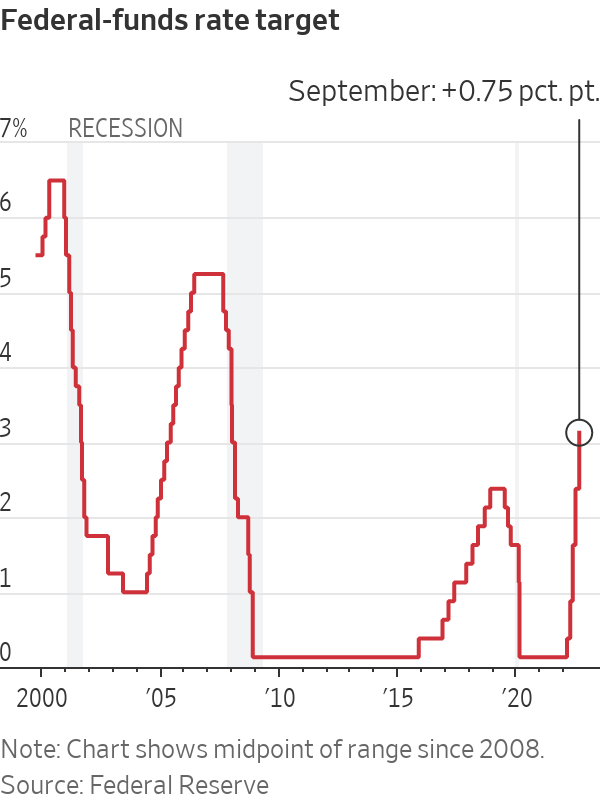
When ‘The Fed’ meets again in early November, they’re almost certain to announce another rate hike. Whether it amounts to 75 basis points or less is of little concern. What’s certain is that auto loan rates will continue to rise in November.
Based on our own analysis at CarEdge, we expect the average car loan interest rate to climb higher to between 6.5% (for new cars) and 10.5% (for used cars) in November.
Remember that these are expected averages, so there will be better (and worse) auto loan offers out there. Don’t settle for your first auto loan rate offer. Shop around!
Not sure where to start? See competitive loan offers with the help of CarEdge!
There are still ways to save big-time on auto loan interest. These are the biggest ways to keep more money in your pocket:
Manufacturer Incentives: The Best Auto Loan Rates Right Now (For a Limited Time)
Have you joined the FREE CarEdge Community? Tens of thousands of car buyers, sellers, and owners are harnessing the power of community to make vehicle ownership what it should have always been: hassle-free with no gimmicks. Whether you’re searching for the best way to browse car listings online or looking for a community of auto enthusiasts, we’d love to have you.

Electric trucks are not cheap, and some of them are just downright expensive. Are the fuel savings and power worth the extra cost? This resource features every electric truck’s pricing and range in 2024. Which electric pickups are you interested in? There will be more to choose from in just a few years’ time.
| Make | Model | Release Date | Starting Price | Fully-Optioned | Range |
|---|---|---|---|---|---|
| Chevrolet | Silverado EV | early 2024 | $52,000 | $106,895 | up to 450 miles |
| Ford | F-150 Lightning | available now | $49,995 | $91,995 | 240 - 320 miles |
| GMC | Hummer EV | available now | $86,645 | $112,595 | 329 miles |
| GMC | Sierra EV | early 2024 (Denali) | $52,000+ | $107,000 | up to 400 miles |
| Rivian | R1T | available now | $73,000 | $105,000 | 314 - 400 miles |
| RAM | 1500 REV | 2025 | N/A | N/A | 350-500 miles |
| Tesla | Cybertruck | 2024 | $60,990 | $99,990 | 250-340 miles |
First, here are a few things you should know about charging an electric pickup (or any EV for that matter):
| Make | Model | Fast-Charging Times | Notes |
|---|---|---|---|
| Chevrolet | Silverado EV | Add 100 miles in 10 minutes | Expect to add 300 miles of range in 30 minutes |
| Ford | F-150 Lightning | Add 200 miles in 40 minutes | The Lightning charges to 80% quickly, but slows considerably after. |
| GMC | Hummer EV | Add 100 miles in 10 minutes | Expect to add 300 miles of range in 30 minutes |
| GMC | Sierra EV | Add 100 miles in 10 minutes | Expect to add 300 miles of range in 30 minutes |
| Rivian | R1T | Add 200 miles in 35 minutes | The R1T accepts up to 220 KW of power, which is above average |
| Tesla | Cybertruck | "Recover up to 136 miles in 15 minutes" | Announced in 2019, the Cybertruck has been delayed to 2024 |
| RAM | 1500 REV | Add 110 miles in 10 minutes | 350-500 miles of range; coming late 2024 |
In 2022, the Inflation Reduction Act was signed into law, and with it came a complete revamp of federal EV incentives. Here’s a brief summary of the biggest changes to tax credits for electric trucks in 2024:
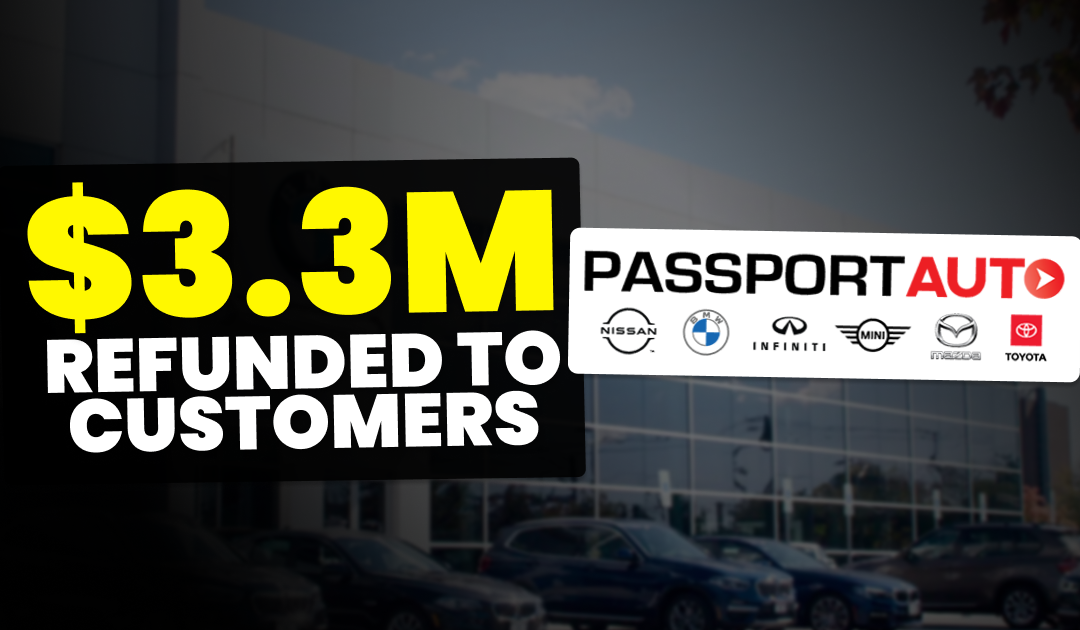
Just months after the Federal Trade Commission (FTC) took legal action against Koons Kia and Napleton dealerships, the FTC has reached a high-dollar settlement with the DC-area’s Passport Automotive Group. The FTC found evidence that Passport Auto Group dealerships were routinely deceiving consumers by forcing thousands of dollars in illegal junk fees onto car prices and for discriminating against Black and Latino consumers with higher financing costs and fees.
Passport, its president, Everett Hellmuth, and its vice president, Jay Klein, will pay more than $3.3 million to settle the FTC’s lawsuit. The settlement money will be used to refund impacted consumers.
Passport Automotive Group operates nine dealerships in 2022:
“With this action against Passport and its top executives, the Commission is continuing its crackdown on junk fees and discriminatory practices that harm Black and Latino consumers,” said Samuel Levine, Director of the FTC’s Bureau of Consumer protection. “As families struggle with rising prices, companies that think they can hit consumers with hidden fees should think again.”
The FTC has been on a roll in 2022. This summer, the FTC proposed a new set of rules that would ban specific anti-consumer sales practices that are commonly employed at car dealerships. Dealer lobbies were furious.
The FTC’s investigation found that at Passport dealerships, Black and Latino consumers paid on average $235 to $291 more in interest than non-Latino white consumers did. It also alleges that Black and Latino consumers were charged an extra fee 42 percent more often.
The FTC announced that it is taking the following enforcement actions:
The Commission vote to file the complaint was 4-1. Interestingly, one Commission member, Noah Joshua Phillips, voted no on the motion.
In 2018, the FTC alleged that Passport Auto Group issued fake “urgent recall” notices to consumers to lure them to visit dealerships. According to the FTC, the vast majority of the vehicles covered by the notices did not have open recalls.
Will Passport Auto Group’s second run-in with the FTC be enough to put an end to deceptive, anti-consumer practices? $3.3 million is quite the hefty fine.
Koons Kia Fined $1 Million by Maryland Attorney General for Fake Fees